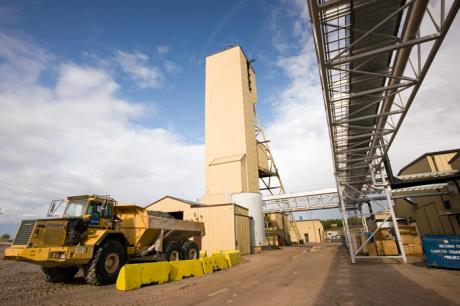Cameco's Cigar Lake project has a uranium mining licence from the Canadian Nuclear Safety Commission (CNSC) that clears the way for the start of production at the northern Saskatchewan site.
 |
| Cigar Lake (Image: Cameco) |
Cameco had sought authorisation to complete the final stages of commissioning, the transition into operations and the commencement of the shipping of uranium ore slurry for further processing. The CNSC held a one-day public hearing on the application in April during which it considered submissions from Cameco and 11 intervenors as well as recommendations from regulator's own staff. The newly granted licence authorising the "construction and operation" of the project will be valid from 1 July 2013 to 30 June 2021.
Cameco president and CEO Tim Gitzel said the company was pleased with the regulator's decision. "This licence will allow Cameco to advance the Cigar Lake project into production and shows Canada's nuclear regulator has confidence in our team," he said. The company plans to begin production by jet boring ore this summer. Ore from the mine is to be processed through a toll-milling agreement at Areva's McClean Lake mill, and the first packaged yellowcake is expected in the fourth quarter of the year.
Cigar Lake is the world's second largest high-grade uranium deposit, with grades that are 100 times the world average. The orebody is being frozen prior to mining to improve ground conditions, prevent water inflow and improve radiation protection, and the ore will be removed by a jet boring system, using using water under high pressure to carve out cavities in the orebody and then collecting the resulting ore slurry through pipes. The ore will then be taken to underground grinding and thickening circuits and then pumped to surface as slurry, which will be loaded into special containers for the 70 kilometre journey by road to McClean Lake.
An environmental assessment was completed for the project in the 1990s, and in 2004 a construction licence was granted for facilities including underground mineworkings accessed by two shafts, a surface load-out facility, waste management systems, a mine water management system and associated site facilities. That licence was renewed in January 2010.
Researched and written
by World Nuclear News




_47120.jpg)

_23621.jpg)






